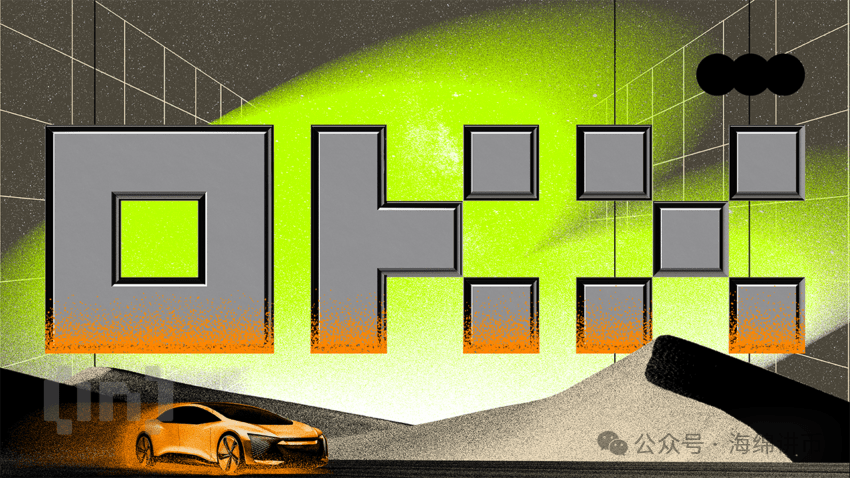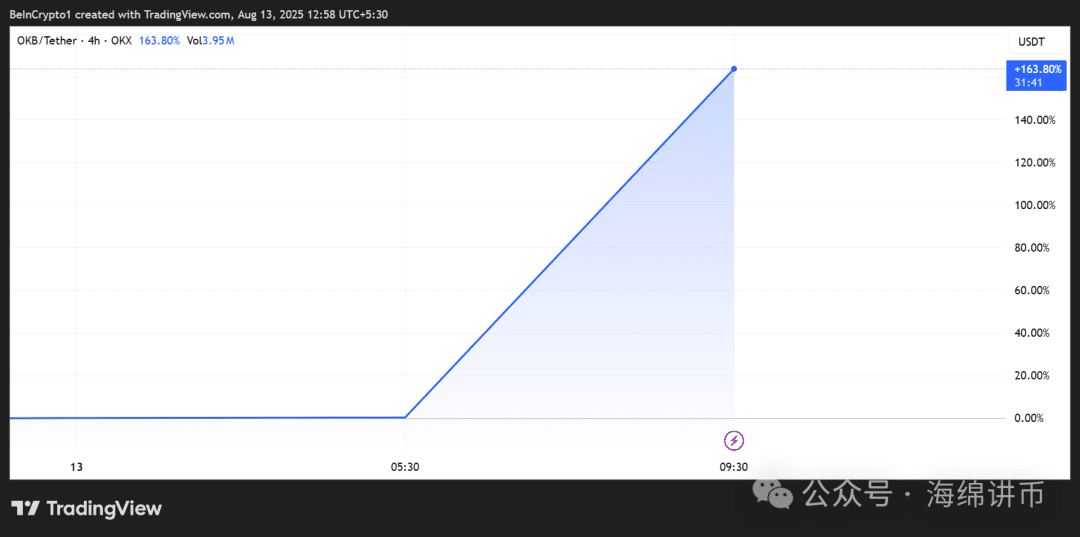In short
After announcing the largest token burn in history and OKX's strategic upgrade, OKB surged over 110% in one hour, hitting an all-time high of $142.88.
OKX has burned over 65 million OKB tokens and introduced a smart contract-based burn mechanism, capping supply at 21 million to reflect Bitcoin's scarcity model.
Traders expect the price of OKB to rise further, thanks to strong trading fundamentals and the increasing popularity of OKX's diverse cryptocurrency services.

The native token OKB of cryptocurrency exchange OKX soared over 110% in just one hour on Wednesday, reaching an all-time high (ATH) of $142.88.
Following the major announcement, the token price surged, similar to the reactions seen in popular exchanges to listing news.
OKX announces token burn and X Layer upgrade: Everything you need to know.
According to on-chain data and OKX's statement, the exchange permanently removed 65,256,712.097 OKB tokens from circulation in a single transaction, worth billions of dollars.
The burned tokens come from historical buybacks and treasury reserves. As is typical with token burns, they are sent to a 'black hole' address and cannot be retrieved.
OKX has broken with past practices and confirmed it will terminate all manual token burns. Additionally, the exchange will adopt an automated smart contract burn mechanism.
This will permanently fix the total supply of OKB at 21 million, consistent with Bitcoin's scarcity model. After the smart contract upgrade is completed, the minting and manual burning functions of OKB will be disabled.
Strategic X Layer overhaul
The announcement is part of the broader 'PP upgrade' for OKX X Layer, which is a public chain built using Polygon's zkEVM technology.
This upgrade increases transaction throughput to 5,000 TPS, reduces gas costs to negligible levels, and enhances compatibility with Ethereum.
OKX clearly emphasizes its focus on DeFi, global payments, and tokenization of real-world assets (RWA), supported by an ecosystem fund, liquidity incentives, and infrastructure upgrades (such as improved cross-chain bridges and compliance services).
Moreover, due to the overlap between OKTChain and X Layer, OKX will gradually phase out its OKTChain. OKT trading will cease on August 13, 2025. The exchange will automatically convert OKT to OKB based on the average closing price from July 13 to August 12, 2025.
The announcement excerpt hints: 'OKTChain will be completely shut down on January 1, 2026.'
Nevertheless, OKB will continue to serve as the sole Gas token for X Layer. The Ethereum Layer-1 (L1) version of OKB will gradually be replaced by the X Layer version.
OKX rose 163% in response to the market's active reaction.
Cryptocurrency trader Henry expressed appreciation for the burn and praised OKX CEO Xu Mingxing for making a bold decision to reduce supply. Extreme scarcity, technological upgrades, and ecosystem expansion sparked a buying frenzy, pushing OKB to record levels.
"As expected from Star Master, General Xu, with a technical background, it feels like this move was probably suggested by you," said Zhang Xuan.
After the announcement, the price of OKB soared 163%, reaching a new high of $142.88. This explosive rise stemmed from the reduction in supply due to the token burn, which stimulated demand.

Due to traders rushing to cash in early profits, the token slightly retreated from its new highs. However, analysts point out that the fixed cap of 21 million, combined with the growing utility of DeFi, payments, and risk-weighted assets (RWA), could provide a solid foundation for sustained price momentum.
At the same time, it is worth mentioning that this parabolic volatility often triggers market fluctuations. Furthermore, whether OKB can maintain its new valuation will depend on the speed at which developers and users accept the X Layer's expanded capabilities.
With the launch of the X Layer upgrade and the completion of the largest OKB burn in history, OKX seems to be positioning its ecosystem as a major player in high-throughput, low-cost blockchain infrastructure.

